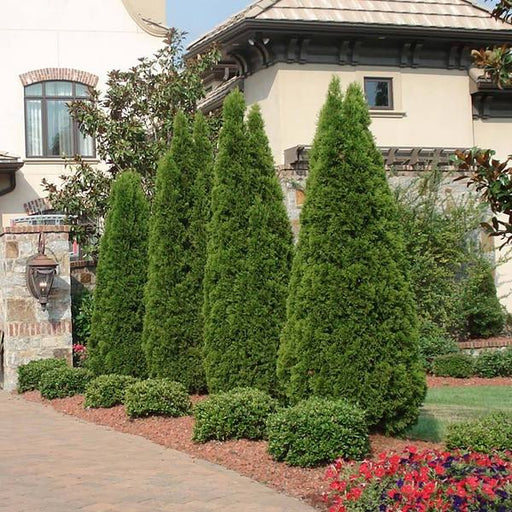
Emerald Green Arborvitae
The Emerald Green Arborvitae is the most popular, medium size privacy screen tree. If you are looking for an evergreen hedge without the extreme he...
View full detailsFree Shipping on Orders $119+

The Emerald Green Arborvitae is the most popular, medium size privacy screen tree. If you are looking for an evergreen hedge without the extreme he...
View full details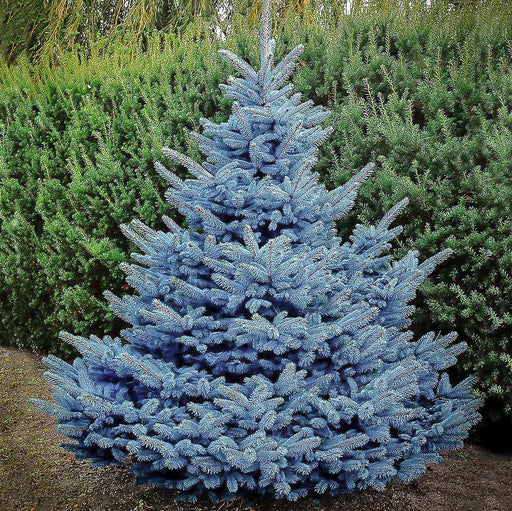
If you love the Colorado Blue Spruce, but don’t have the room, the Baby Blue is just what you are looking for. This dwarf blue spruce tree stays un...
View full details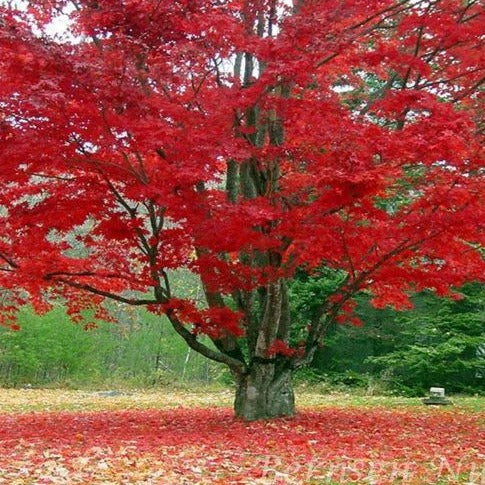
The Red Maple Tree can easily grow 40-60 feet tall with a round to oval shape. This Maple is extremely cold hardy. It will grow faster than a sugar...
View full details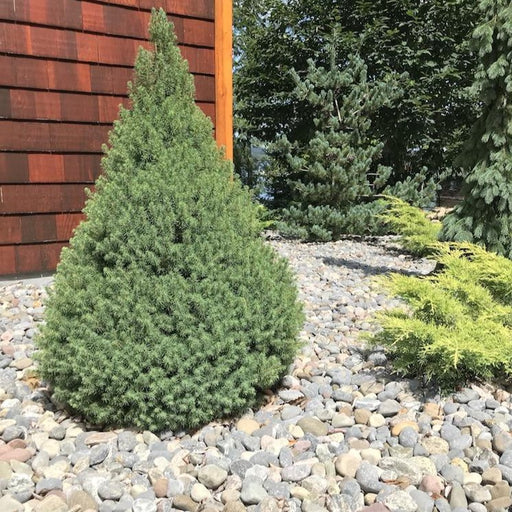
Add property value to your home with very little work! The Dwarf Alberta Spruce adds so much appeal to your property you will be shocked at how eas...
View full details
Introduction Add Year-Round Blue Color and Texture to your Landscape! Extremely Easy to Care for A true Classic in the American Landscape Hardy AN...
View full details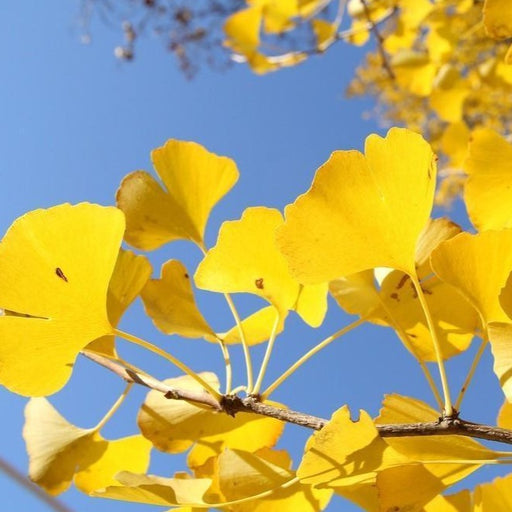
The hearty Ginkgo is one of the most recognizable trees. Did you know that this Chinese native goes back over 270 million years?! If you thought th...
View full details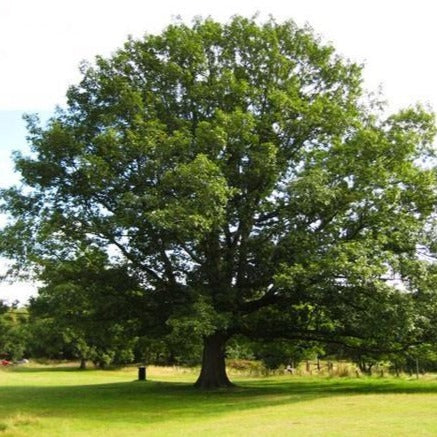
Introduction Fast Growing Shade Tree considered a National Treasure! Stunning Red Fall Color Adaptable and Tolerant Easy to Grow Attracts Wildlife...
View full details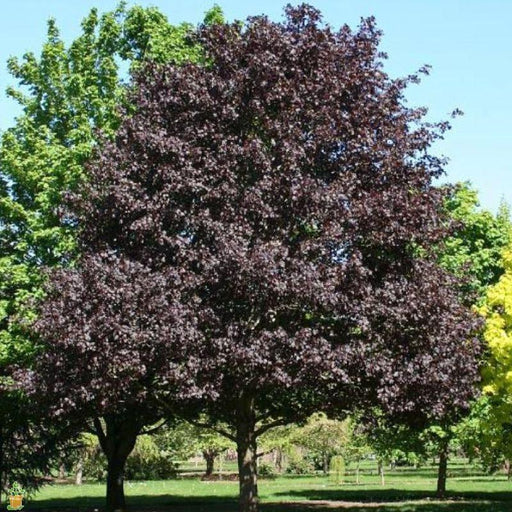
Introduction Dark Purple Foliage Makes this Shade Tree a Real Winner! Hardy and Low Maintenance Super Unique Shade tree Brings out more color in t...
View full details
Introduction The Most Cold Hardy Privacy Screen! Trim to any Height and Width Plant in Full Sun or Full Shade! A Graceful and Strong Focal tree N...
View full details
Tall, slender, and columnar, the Taylor Juniper tree is a popular choice for those looking to create a lush privacy screen, hedge a design element ...
View full details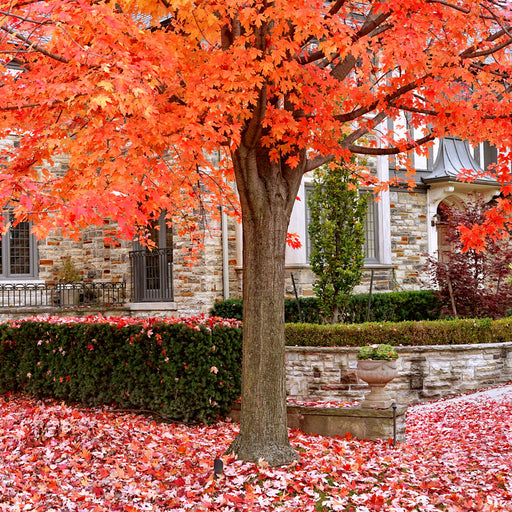
This colossal Maple Tree is the classic icon of autumn color. Its large canopy is a magnificent green in summer, giving way to brilliant yellows, o...
View full details
Introduction One of the Fastest Growing and Tallest Maples! Reaches heights up to 80 feet Silver-backed leaves Great tree for shade A true America...
View full details
For a sturdy, cold-hardy tree, the Quaking Aspen Tree is a perfect choice! This durable tree can handle even the harshest winters, and poor soil as...
View full details
With a name like Superior Hybrid Poplar, you know you're getting a best-in-class tree. And the Superior Hybrid Poplar Trees live up to its name in ...
View full details
Though it’s called the Eastern White Pine Tree, it’s named this way for its white sapwood! The foliage itself remains a stunning green year-round, ...
View full details
The Dakota Pinnacle Birch is one of the best birch trees for colder climates. It’s hardy, cold- and pest-tolerant and has four seasons of interest,...
View full details
If you’re looking to save money on a traditional privacy screen for your yard while adding some greenery, try the American Pillar Arborvitae! This ...
View full details
For a hardy tree that gives off year-round color, the Fat Albert Spruce is a perfect choice! Its silver-blue foliage adds some unique color to any ...
View full detailsMany maple trees, including the red maple, are native to Georgia. The river birch is a very fast growing tree that is a Georgia native tree. The tulip poplar is another fast growing tree that is native to Florida. It offers shade and is a native flowering tree as well. The hardy American sycamore is also fast growing and long-lived. The northern red oak is a sturdy native tree that is a favorite of wildlife and songbirds. The eastern redbud and flowering dogwoods(Cornus florida) are stunning flowering native Georgia trees that bloom in early spring.
Spring and fall are the ideal seasons for planting Georgia trees. For the warmer parts of Georgia you can plant most trees just about anytime of year. Be sure to offer plenty of water when planting trees in summer. The cooler parts of the state can plant almost anytime as long as the ground isn’t frozen. Just avoid planting Georgia trees that are sensitive to low temperatures in winter. Trees that like cool temps and tend to get stressed by heat and drought should not be planted in summer.
Be sure the root ball of your Georgia tree is moist so it is ready to plant. Dig a hole at least twice as wide as the pot of your tree, but not quite as deep as the pot is tall. Put your tree in the hole and be sure it is level and straight. The top of the root ball should be slightly higher than the existing soil line. Fill the soil in around the root ball. Tamp the soil down gently with your hands to remove air pockets. Water deeply until the earth around your tree is completely saturated. Apply mulch in a mound around your new tree to help retain soil moisture, protect the roots, and reduce weeds. Pull the mulch away from the trunk to avoid promoting issues with pests and disease. Water your Georgia tree daily for the first week and 1 to 3 times weekly for the first 2 to 3 months until your tree is established. Water heavily less often rather than watering a small amount often. Let the hose run for a couple minutes at the base of your tree.
Winter or early spring is the best time to prune most Georgia trees. However, trees that flower in spring should be pruned once their bloom period has ended. Fall is also a good time for pruning many Georgia trees because of cooling temperatures. A tree’s metabolic processes also slow down at this time. Avoid pruning evergreens in late fall in the cooler parts of the state. Pruning can encourage new growth which can then be damaged by freezing temperatures. This won’t kill your tree, but it can kill the new growth. Minor pruning can be done anytime of the year. Broken, dead, or diseased branches should be removed when you notice them regardless of the time of year.
The Meyer lemon tree can grow in the ground in the warmest parts of the state (zones 8 and 9) or as a patio plant in zones 6, 7, 8. and 9. Apple trees, peach trees, cherry trees, and pear trees can grow throughout Georgia. Fig trees and persimmon trees can grow in growing zones 7, 8, and 9. The Chicago hardy fig tree can grow in zone 6 as well. These Georgia fruit trees all grow well in this state.
Buy Georgia trees for zone 8 here at Plantingtree. We are a family owned and operated online plant nursery that ships to Georgia trees throughout the continental United States. We carry premium plants and trees for sale. We have flowering trees for Georgia, Georgia native trees, fruit trees, oak trees, and palm trees for Georgia. These premium trees are well-branched, and ready to plant! Scroll up to see our available trees for Georgia.
For additional options, be sure to check out our Georgia collections.
You May Also Like:

